How to Choose your Dream Wedding Dress — Sustainable Edition
LET'S TALK ABOUT THE DRESS! I HAD A BIT OF A HARD TIME FINDING A WEDDING DRESS. I WANTED IT TO BE TWO THINGS: BEAUTIFUL (DUH) BUT ALSO SUSTAINABLE, WHICH FOR ME MEANT A NATURAL MATERIAL AND A TIMELESS DESIGN. I WENT TO BRIDAL STORES, DEPARTMENT STORES AND SMALL BOUTIQUES ALIKE AND COULDN’T BELIEVE HOW DIFFICULT IT WAS TO FIND SOMETHING THAT TICKED ALL THE BOXES. WHEN I LIKED A DESIGN, THE MATERIAL WAS POLYESTER OR RAYON AND WHEN IT WAS SILK, THE DESIGN WASN’T WHAT I WAS LOOKING FOR. IN THIS WEDDING DRESS SHOPPING GUIDE, I'M SHARE EVERYTHING I’VE LEARNED WHEN CHOOSING MY WEDDING DRESS WITH YOU, FROM ONE BRIDE TO ANOTHER.
words by SARAH MARIE DAY
photographs by KRISTIN PITEO
TIP NO. 1 — DON’T FALL FOR THE SATIN TRAP
It was honestly astonishing how many bridal dresses are made out of polyester and other synthetic materials. Easily 80% of the dresses I saw were made out of plastic based materials. I avoid those fabrics in general, but especially on my wedding day, I certainly didn’t want to wear a plastic-based material. Sometimes the label didn’t say it was polyester or rayon, it would just state „silky material“ or „satin“. Satin is not a fabric, it is a kind of weaving. To be exact, it is „a fabric of silk, nylon, rayon, or the like having a smooth finish, glossy on the face and dull on the back“.
TIP NO. 2: THE FABRIC OF YOUR CHOICE
No matter if you’ll have a bespoke dress made, or you’re scanning the bridal boutiques - it helps to know which fabric you want. Always check the composition. Start with educating yourself on fabrics and choose which one makes most sense for your wedding. Are you planning a summer wedding at Lake Como? You want a a light, flowy, breathable material. Maybe a silk or cotton batiste, crepe, chiffon or organza are for you. If your wedding will be in the colder months, a thicker silk (think brocade or satin) combined with lace could be stunning! Silk is a raw material that can be woven into different styles. The materials mentioned are all different in weaving and can be made out of various raw materials.
If you’re having a bespoke dress made, deadstock materials could be a fun option too! Deadstock means leftovers materials from fashion houses. In Paris for example, there are many fabric stores that sell Haute Couture deadstock fabrics. Most of those stores are in the Sentir area. I got married in Germany and had a bespoke dress made (more on that in a moment). I found my dream silk and silk tulle at Haute Couture Stoffe Möller. To learn more about wedding dress fabrics, check out this overview on brides.com.
TIP NO. 3: IT’S IN THE DETAILS
I did an extensive Pinterest search before even stepping foot into the first bridal store. Whenever I had a free moment, I would scroll through elegant dress options on social media and save them all in a folder. You could even do a moodboard and print out some of your favourites! Analyse what details and shapes most of the dresses that inspire you have in common. Do you like a traditional A-line or ballgown shape? Or are you looking for something more modern and minimalistic, like an column, trumpet or slip dress? Check out this article on The Knot for an overview on shapes. Do you like a natural waistline (meaning at your actual waist) or a higher, empire waistline? Do you like long sleeves? Do all dresses you like have layers or play with transparency elements? Which neckline do most of them have? Take a paper and get specific on shapes and details you love. For me, I loved the idea of having two layers, a silk layer and a transparent tulle layer above. Another detail I love are the long sleeves! They look like gloves and are only attached to the body of the dress by tulle (which was the biggest challenge we faced when making the dress).
TIP NO. 4: CONSIDER A BESPOKE DRESS
So what was my solution? I had a dress custom made! My lovely friend Alina Ifraimova, who works in bridal fashion and knows all the good fabric stores and tailors in our hometown in Germany, helped me find a great tailor and introduced me to a beautiful fabric store specialised in Haute Couture fabrics. I found an amazing, thick Italian silk and a matching silk tulle. Silk tulle is super rare and is normally only used for hats, because it’s very delicate. Alina came with me to every fitting and after 10 appointments, my dream dress was done! I loved the process of making the dress and being able to create something that only exists once. And in the end, it even turned out to be more affordable than buying any of the polyester dresses I saw in the stores!
TIP NO. 5: REWEARING IS CARING
A very beautiful and emotional option is asking your mom for her wedding dress and bring it to a tailor to get it fitted for you. This is a beautiful way to honour her on your big day. You can even redesign some details, if there is anything that doesn’t fit with the aesthetic you’re looking for (80s puffer sleeves are maybe not what’s on your list). Also, the other way around, when you’re choosing your wedding dress, think about a timeless design that maybe one day your own daughter might want to rewear!
Talking about rewearing, naturally your wedding dress will only be worn once. But what if you could redesign it afterwards to wear it again for special occasions? Maybe you can shorten the hem to a midi or mini dress and make a skirt out of the lower part. Or you can make it into a matching top and skirt set. It totally depends on the style of the dress, but that’s something worth giving a thought! If you have a bespoke dress made, you can also use the leftover fabrics! I had a pocket square made for Andrew for the wedding day and a big silk hair tie for the after party.
I hope you found this guide helpful in order to find (or make) the sustainable wedding dress of your dreams! I wish you the most wonderful wedding day!


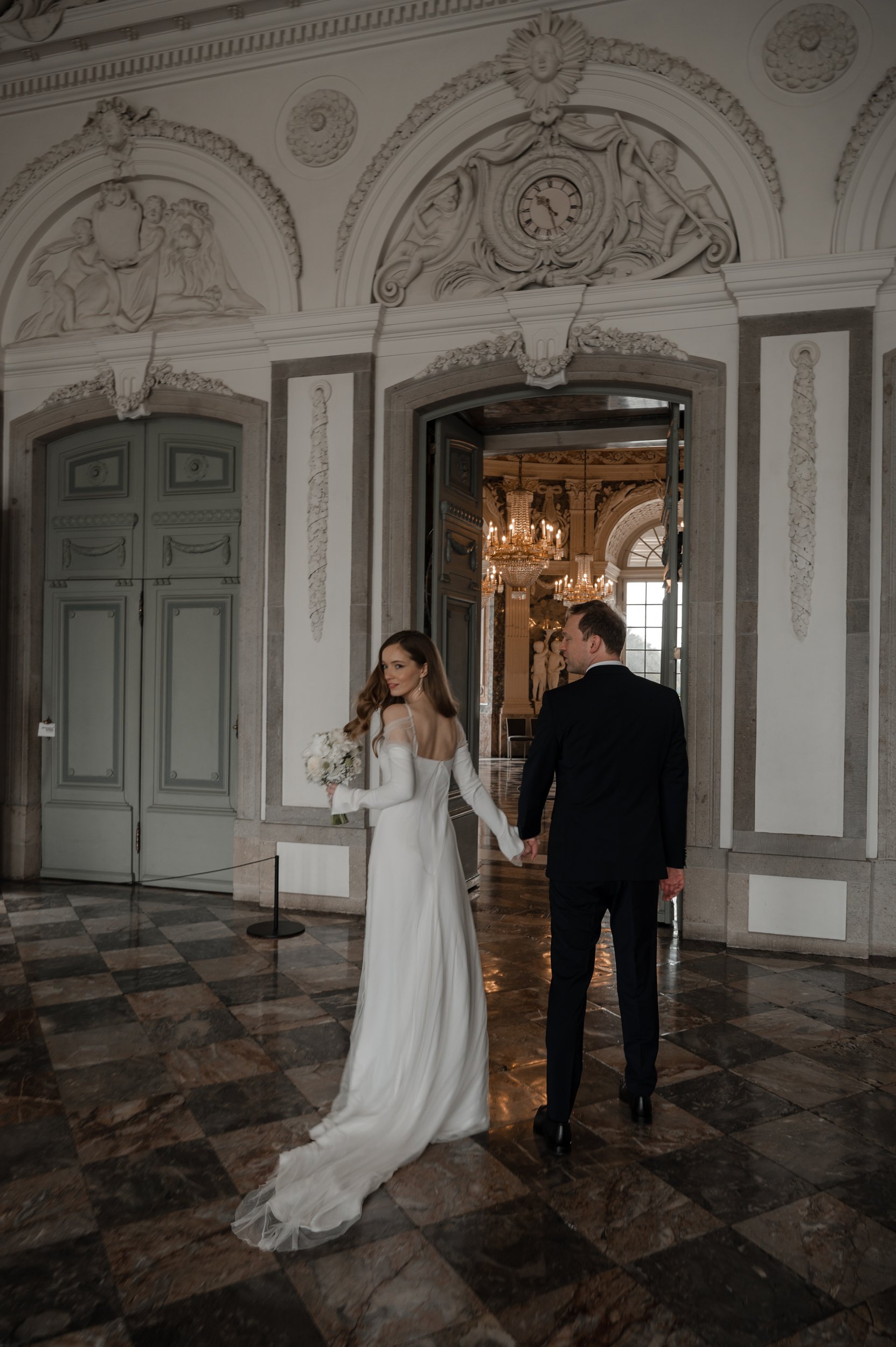
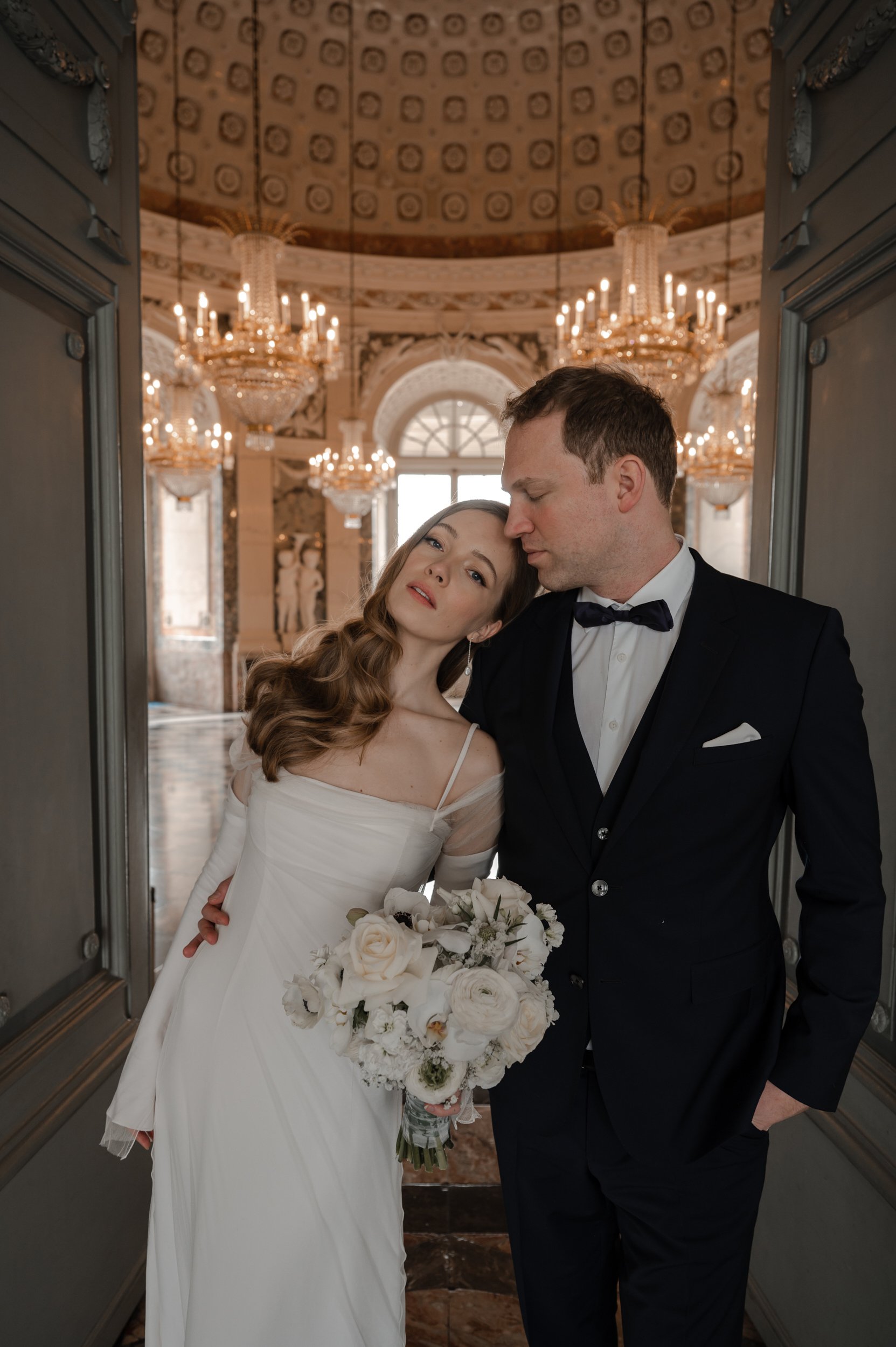


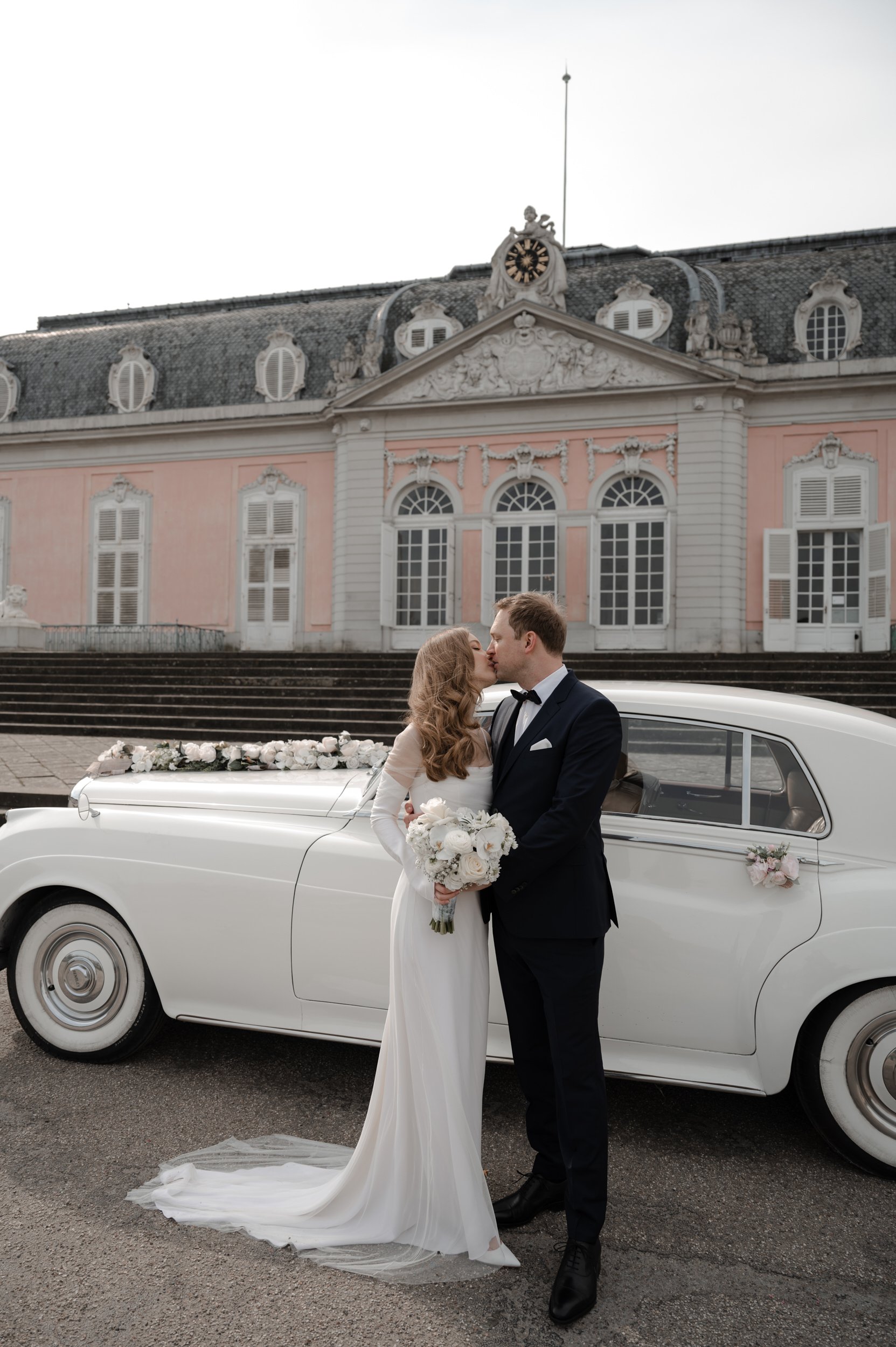
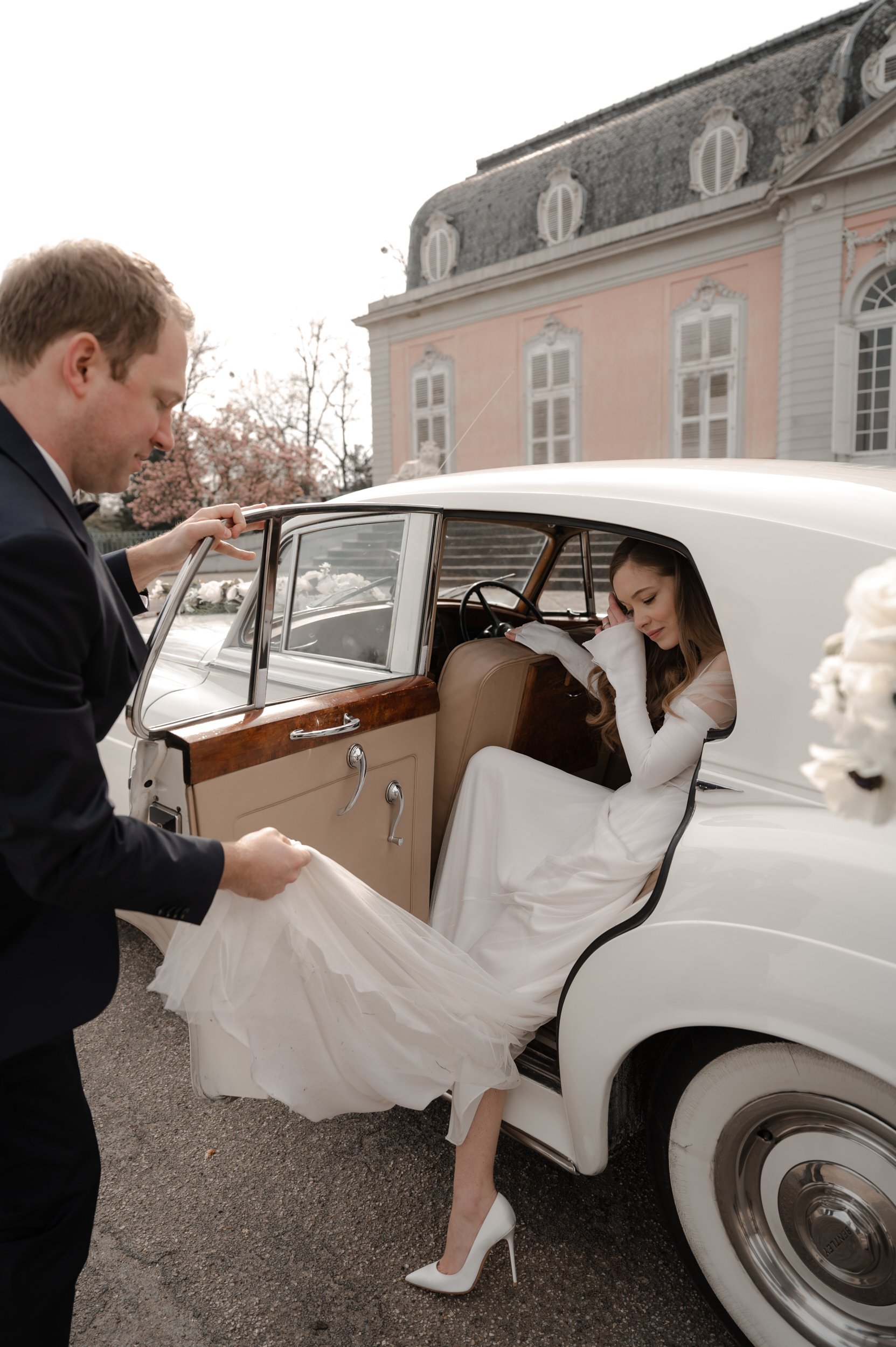
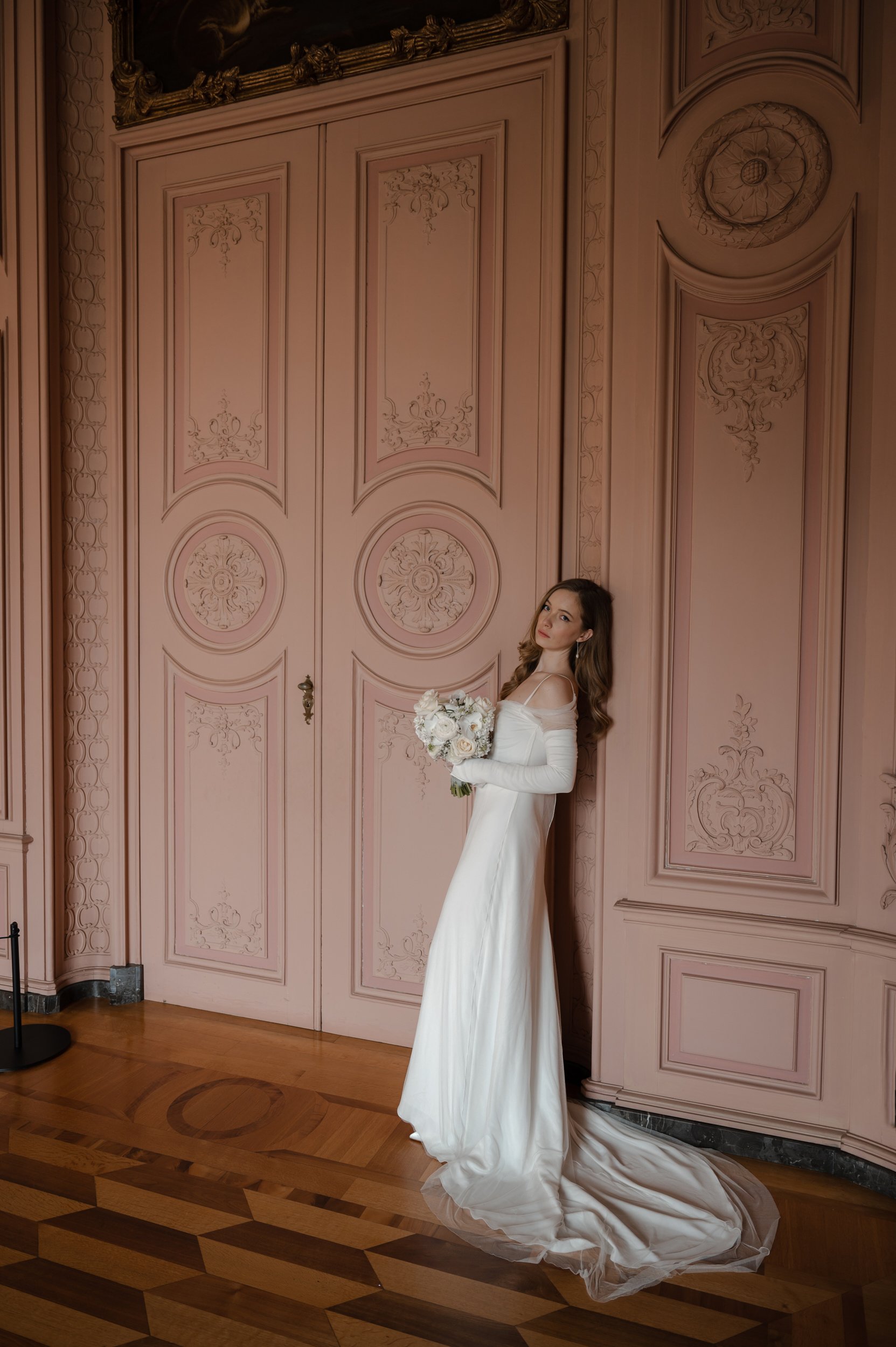
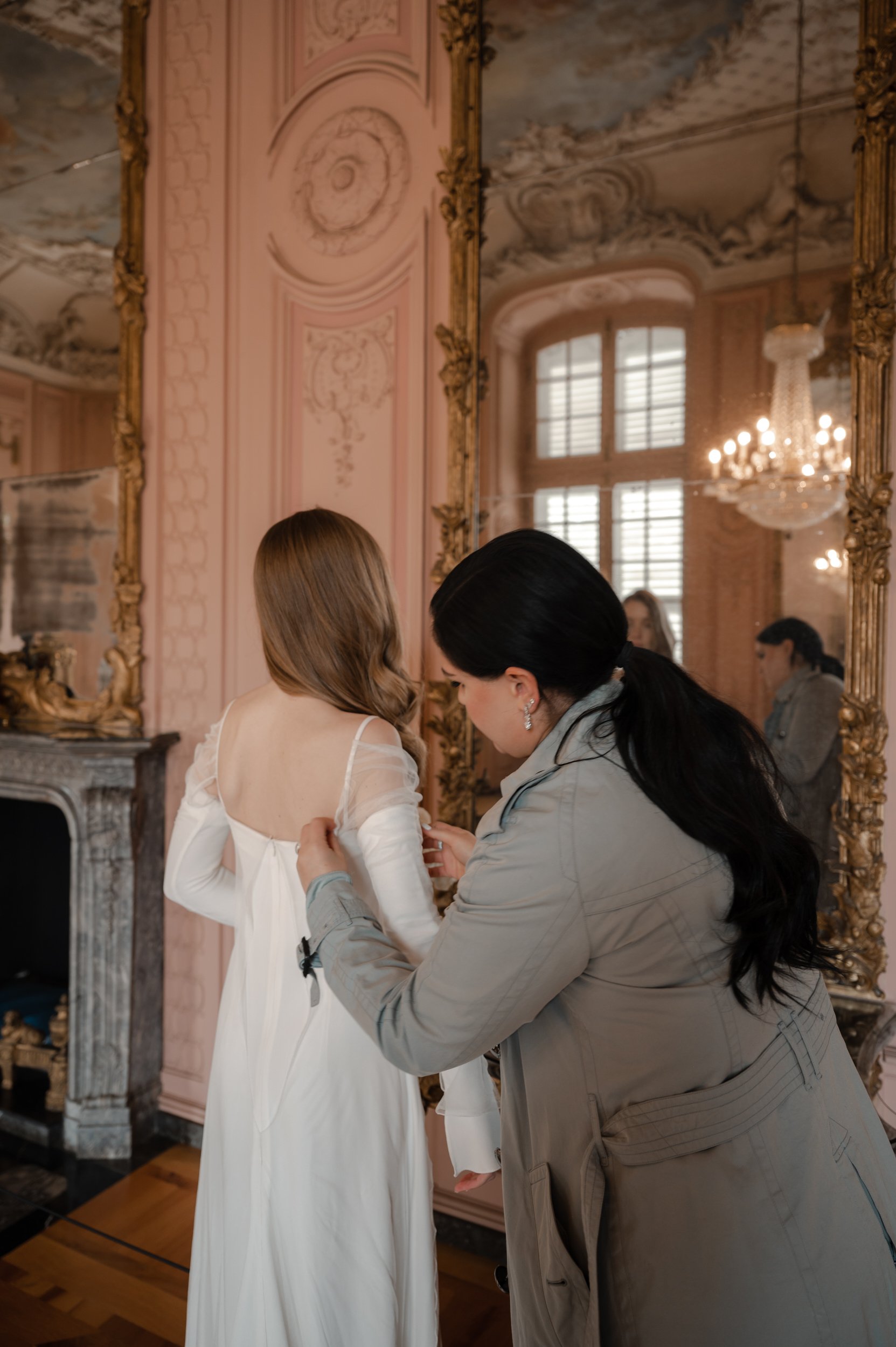


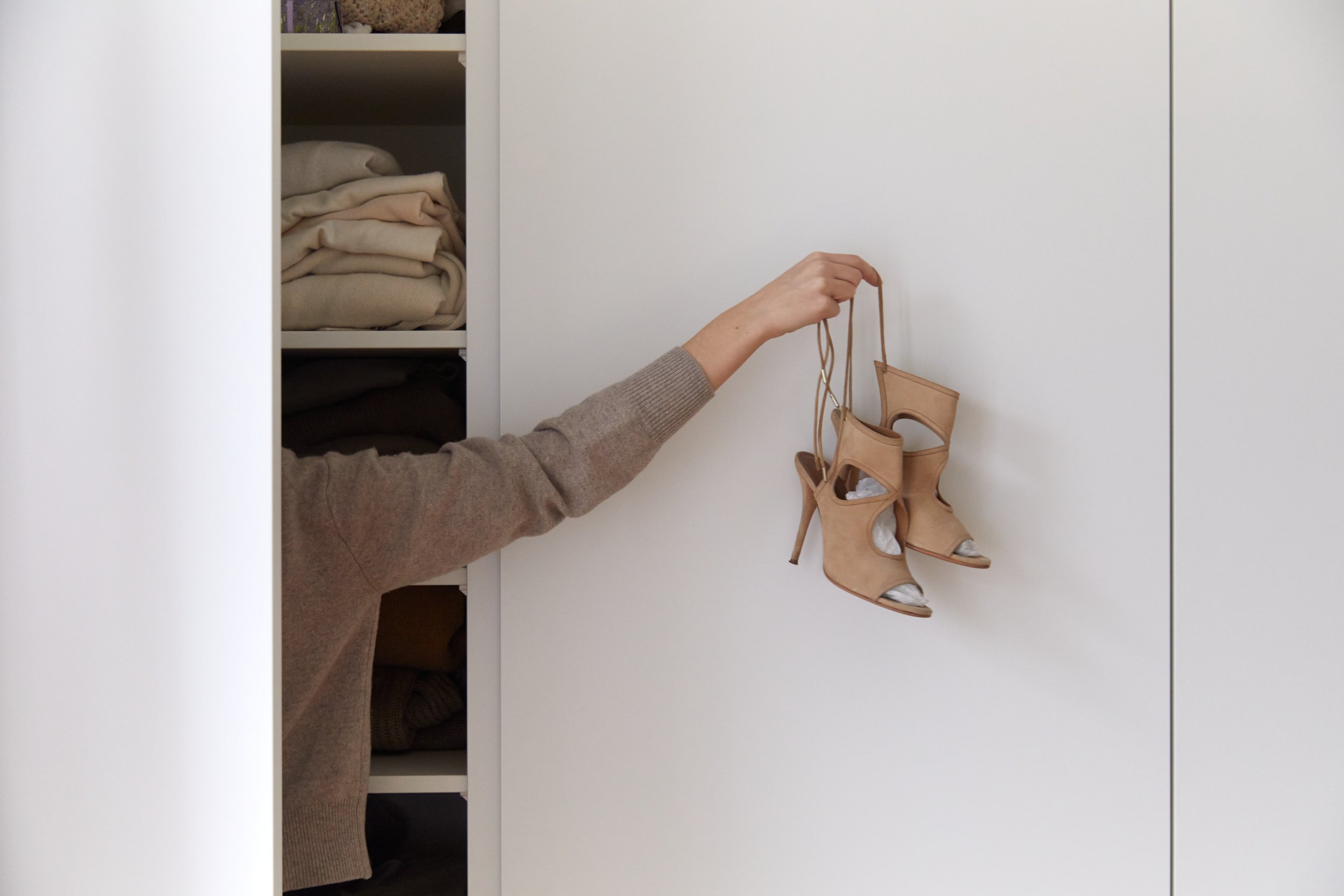
Engagement rings encapsulate what sustainable fashion is all about - they are timeless and long-lasting. Find out four ways to shop sustainable engagement rings.